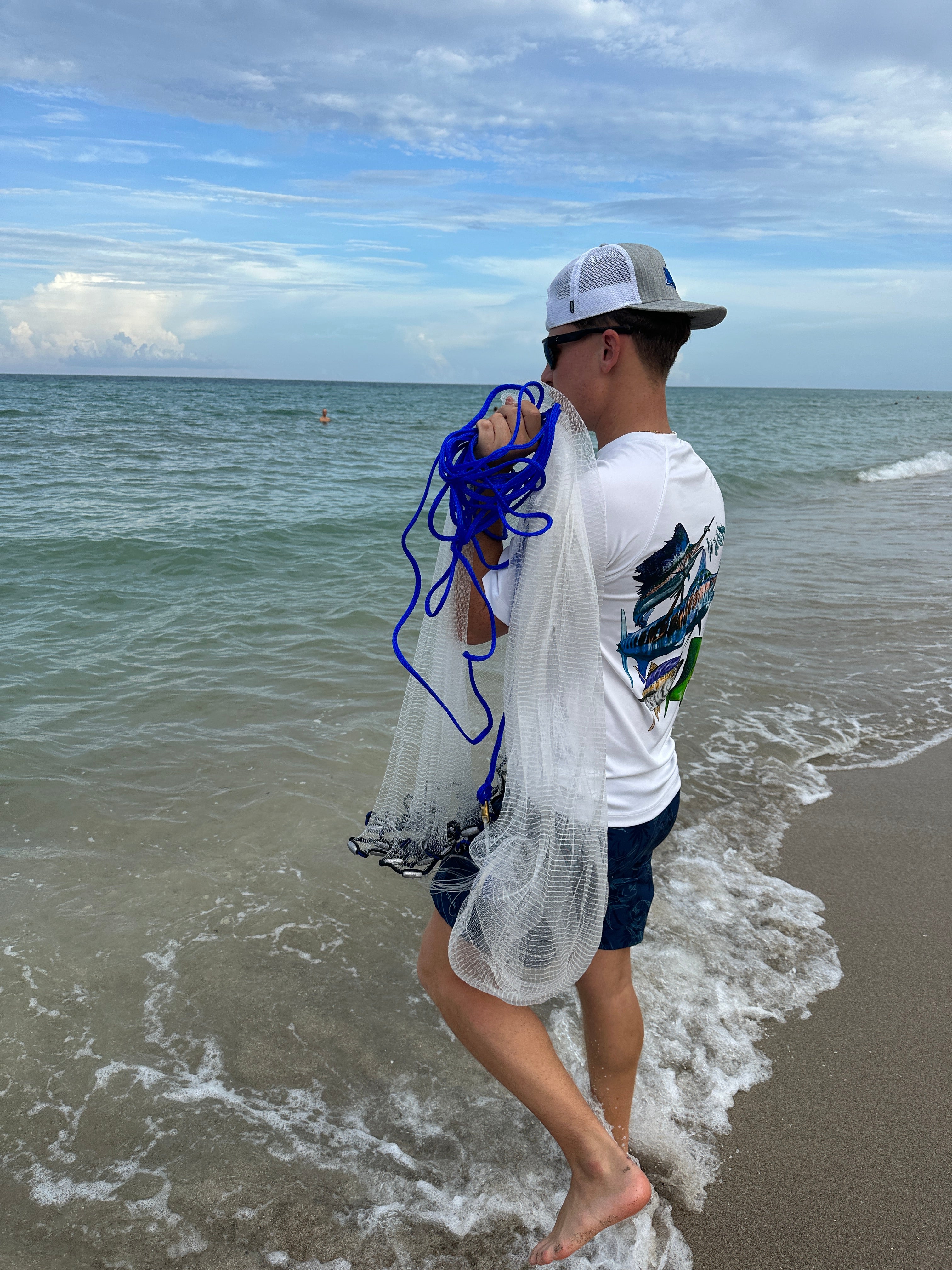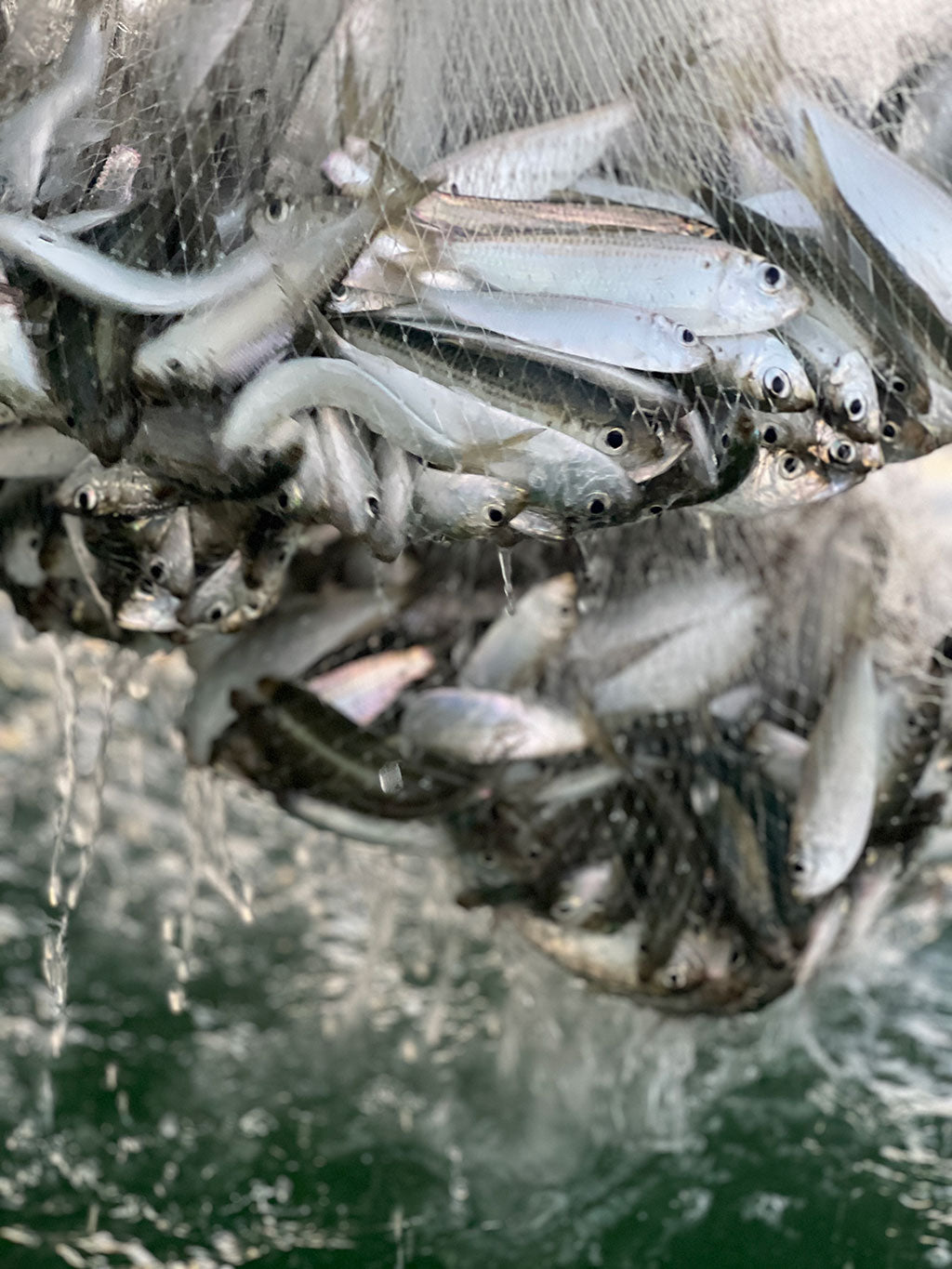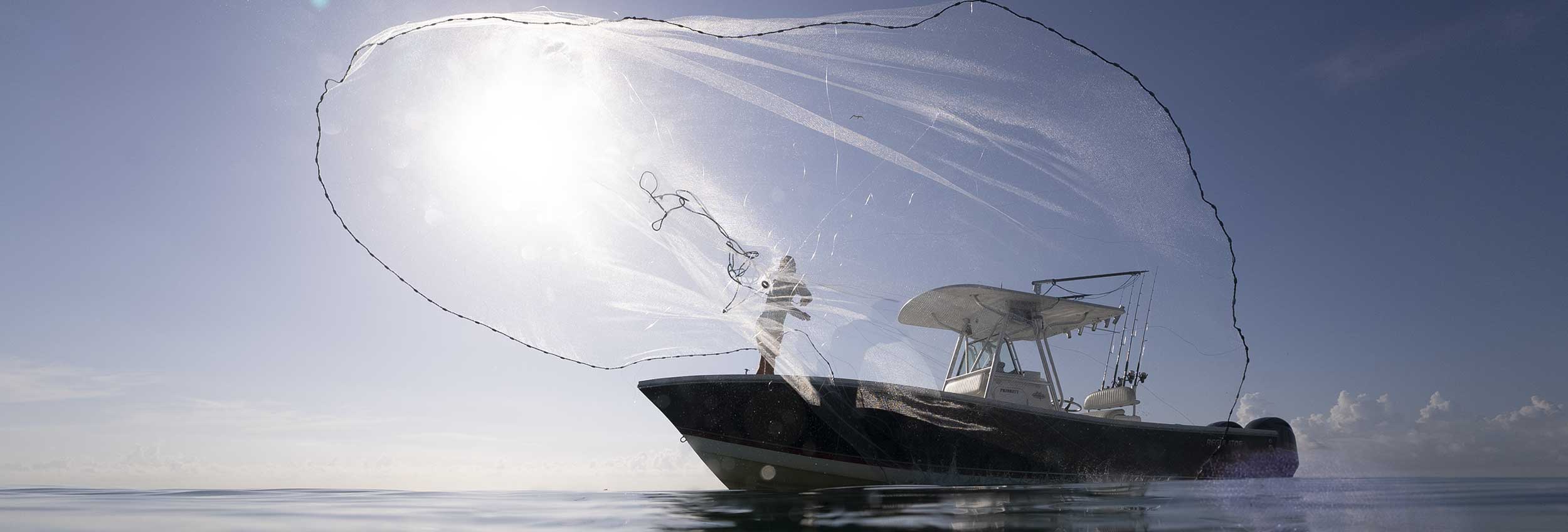
The Purpose of Cast Nets for Catching Live Bait
 The use of live bait, caught fresh with a cast net, significantly improves an angler's chances of attracting game fish. This method embodies the principle of "Match the Hatch"—offering predators prey that mimics their natural food sources. Seasoned anglers, often referred to as the "ten percenters," are adept at using cast nets and choosing the correct bait that mirrors what the target species are currently feeding on. For instance, during the fall mullet migration along Florida’s coast, Tarpon target the migrating mullet. Using a bait different from mullet in this scenario would be less effective.
The use of live bait, caught fresh with a cast net, significantly improves an angler's chances of attracting game fish. This method embodies the principle of "Match the Hatch"—offering predators prey that mimics their natural food sources. Seasoned anglers, often referred to as the "ten percenters," are adept at using cast nets and choosing the correct bait that mirrors what the target species are currently feeding on. For instance, during the fall mullet migration along Florida’s coast, Tarpon target the migrating mullet. Using a bait different from mullet in this scenario would be less effective.Additionally, cast nets support conservation efforts. Researchers use these nets to capture fish harmlessly for population studies and ecological analysis, helping to maintain healthy fisheries.
 However, it’s important to note that the use of cast nets is subject to stringent regulations to protect aquatic ecosystems. These regulations vary widely—from the size of the net allowed to the specific areas where they can be used. For example, in Miami, the law permits cast nets up to a fourteen-foot radius, whereas in New York, only up to a ten-foot radius is allowed for recreational use. Interestingly, cast nets are completely prohibited in the inland waters of California.
However, it’s important to note that the use of cast nets is subject to stringent regulations to protect aquatic ecosystems. These regulations vary widely—from the size of the net allowed to the specific areas where they can be used. For example, in Miami, the law permits cast nets up to a fourteen-foot radius, whereas in New York, only up to a ten-foot radius is allowed for recreational use. Interestingly, cast nets are completely prohibited in the inland waters of California.Before using a cast net, anglers should check the local regulations applicable to their fishing location to ensure compliance and sustainable practice. Information on these regulations can often be found on resources like LiveBait.com, which provides specific guidelines depending on the fishing area.



